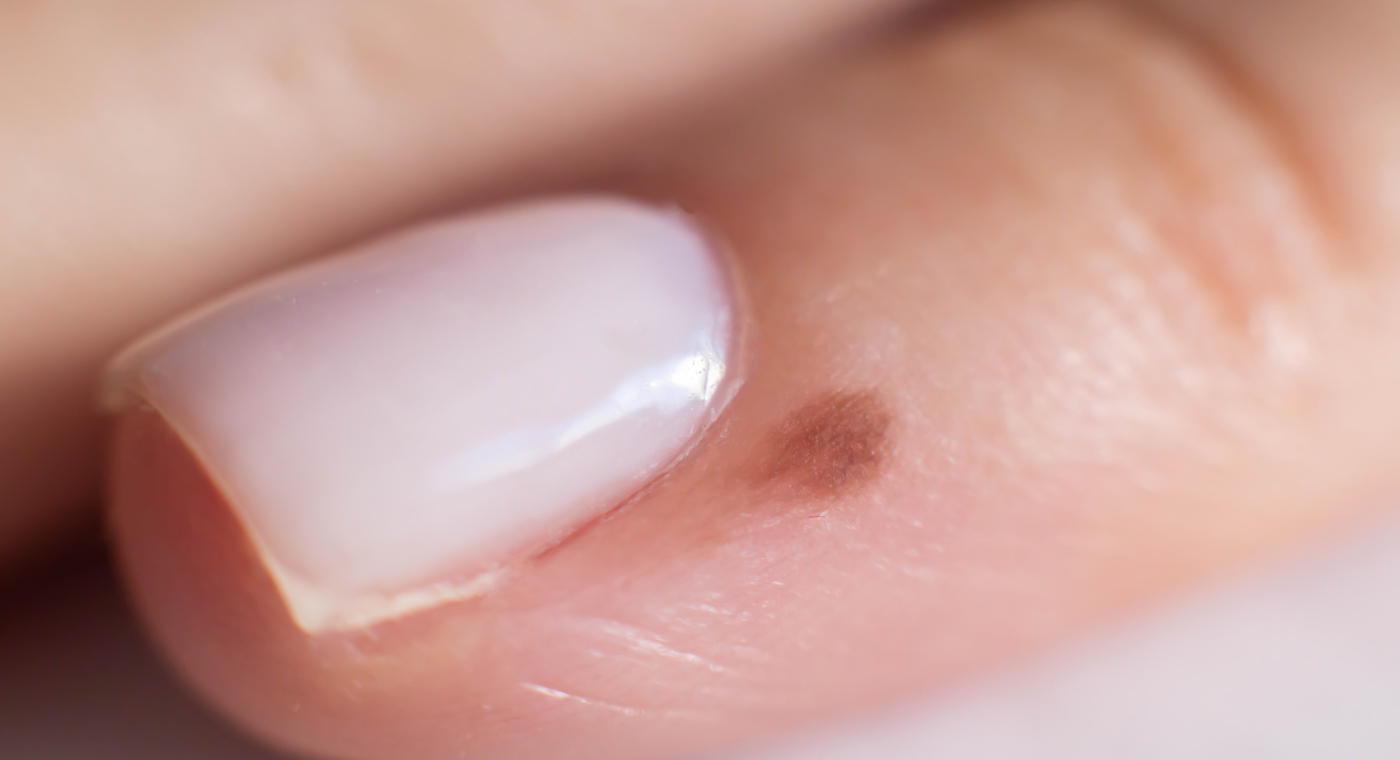Blog
The Ultimate Guide to Fashion Tape: Your Secret Weapon for Flawless Style

The Ultimate Guide to Fashion Tape your Secret Weapon for Flawless Style, In the ever-evolving world of fashion, where trends change at lightning speed, there’s one tool that remains a timeless essential: fashion tape. Whether you’re preparing for a red-carpet event, a wedding, or just a night out, fashion tape can be your best friend. This small yet mighty accessory ensures that your outfit stays in place, avoiding any embarrassing wardrobe malfunctions. In this article, we will explore the various uses of fashion tape, how to apply it effectively, and why every fashion-conscious individual should have it in their toolkit.
What is Fashion Tape?
Fashion tape is a double-sided adhesive strip designed specifically for clothing and accessories. Unlike regular tape, fashion tape is gentle on the skin and fabric, making it ideal for securing outfits in place without causing damage. This invisible tool has become a staple in the fashion industry, helping celebrities, stylists, and everyday individuals achieve a polished and put-together look.
Why You Need Fashion Tape in Your Wardrobe
Fashion tape isn’t just for celebrities or fashion shows; it’s a versatile tool that anyone can use. Here’s why it’s a must-have in your wardrobe:
- Preventing Wardrobe Malfunctions: One of the primary reasons people use fashion tape is to avoid embarrassing wardrobe malfunctions. It keeps plunging necklines, gaping blouses, and slipping straps in check.
- Achieving a Tailored Fit: If your clothes are slightly loose or don’t fit perfectly, fashion tape can help. It creates the illusion of a custom fit by securing fabric exactly where you need it.
- Versatile Uses: Beyond clothing, fashion tape can secure accessories, close gaps between buttons, and even fix a fallen hem in a pinch.
How to Apply Fashion Tape: Step-by-Step Guide
Using fashion tape may seem straightforward, but applying it correctly ensures it stays in place all day or night. Follow these steps for the best results:
- Clean and Dry the Area: Before applying fashion tape, make sure the skin and fabric are clean and dry. This helps the tape adhere better.
- Cut the Tape to Size: Depending on your need, cut the tape to the appropriate length. Smaller strips work well for delicate areas, while longer pieces provide more support for larger sections.
- Peel and Stick: Remove the backing from one side of the tape and press it firmly onto the fabric. Then, remove the other backing and secure it to your skin or another piece of fabric.
- Press and Hold: Hold the tape in place for a few seconds to ensure a strong bond. This step is crucial, especially if you’re using the tape to secure heavy fabrics or accessories.
- Check the Fit: After applying, check your outfit in the mirror to make sure everything is in place. Adjust if necessary.
Common Uses of Fashion Tape
Fashion tape’s versatility makes it an indispensable tool in various situations. Here are some common ways you can use it:
- Securing Necklines: Low-cut tops and dresses can be tricky to manage. A strip of fashion tape keeps the fabric in place, ensuring your neckline stays exactly where you want it.
- Closing Gaps Between Buttons: Button-down shirts often gape between buttons, especially around the bust. Place a small piece of tape between the buttons to close the gap and create a smooth, tailored appearance.
- Holding Straps in Place: Spaghetti straps, off-the-shoulder tops, and strapless bras can sometimes slip. Fashion tape secures them, preventing any awkward adjustments throughout the day.
- Fixing Fallen Hems: If your hem comes undone and you don’t have time for a quick stitch, fashion tape offers a temporary fix. Simply tape the hem in place, and you’re good to go.
- Securing Accessories: Keep your scarves, belts, or statement jewelry in place by using fashion tape. It’s particularly useful for lightweight accessories that tend to shift.
The Do’s and Don’ts of Using Fashion Tape
While fashion tape is a fantastic tool, there are a few things to keep in mind to ensure you get the most out of it.
Do’s:
- Test on Fabric First: Always test a small piece of tape on your fabric before applying it to a visible area. Some delicate fabrics may not react well to adhesive.
- Carry Extra Tape: Keep a few extra strips of fashion tape in your bag, especially if you’re attending a long event. You never know when you might need a quick fix.
- Apply to Clean, Dry Skin: For the best hold, make sure your skin is free of lotions, oils, or sweat before applying the tape.
Don’ts:
- Avoid Applying on Irritated Skin: If you have sensitive or irritated skin, avoid using fashion tape directly on it to prevent further irritation.
- Don’t Use on Delicate Fabrics: While fashion tape works well on most fabrics, avoid using it on delicate or sheer materials that might tear or get damaged.
- Don’t Rely on Tape Alone for Support: Fashion tape provides some support, but it shouldn’t replace a well-fitted bra or other supportive undergarments.
Fashion Tape vs. Alternatives: Which One is Right for You?
While fashion tape is incredibly versatile, it’s not the only option available for securing your outfits. Here’s how it compares to other popular solutions:
- Safety Pins: Safety pins are a classic alternative, especially for quick fixes. However, they can create noticeable bulges or damage delicate fabrics. Fashion tape offers a smoother, invisible solution.
- Double-Sided Tape: Some people use regular double-sided tape in place of fashion tape. However, it doesn’t offer the same skin-friendly adhesive and may not hold as well on fabric.
- Body Adhesive: Body adhesive, often used for dance costumes, is another option for keeping outfits in place. It provides a stronger hold but can be messier to apply and harder to remove than fashion tape.
- Sewing: For a more permanent solution, you can sew your outfit to achieve the desired fit. However, sewing requires time and skill, making fashion tape a quicker, more convenient option.
Choosing the Right Fashion Tape for Your Needs
Not all fashion tapes are created equal. Here are a few factors to consider when choosing the right one for your needs:
- Adhesive Strength: Some tapes offer a stronger hold, which is ideal for heavier fabrics or outfits that require extra support. Lighter tapes are better for delicate fabrics or when you need a temporary fix.
- Skin Sensitivity: If you have sensitive skin, opt for hypoallergenic fashion tape to avoid irritation. Many brands offer tapes specifically designed for sensitive skin.
- Fabric Compatibility: Consider the type of fabric you’ll be using the tape on. Some tapes work better on certain materials, so check the product description or reviews before purchasing.
- Ease of Removal: If you plan to remove the tape throughout the day, look for a tape that’s easy to peel off without leaving residue or causing skin irritation.
Where to Buy Fashion Tape
Fashion tape is widely available both online and in stores. Here are a few places where you can purchase it:
- Online Retailers: Websites like Amazon, eBay, and specialty fashion sites offer a wide range of fashion tape brands and types. This option provides the most variety and convenience.
- Department Stores: Many department stores carry fashion tape in their lingerie or accessory sections. Brands like Hollywood Fashion Secrets are commonly found in these stores.
- Beauty and Cosmetic Stores: Some beauty stores, especially those that cater to professional makeup artists and stylists, carry fashion tape as part of their product lineup.
- Specialty Boutiques: High-end boutiques or stores specializing in formalwear often stock fashion tape for customers looking to perfect their outfits.
Caring for Your Fashion Tape
To get the most out of your fashion tape, proper storage and care are essential. Here are a few tips:
- Store in a Cool, Dry Place: Keep your fashion tape away from heat and humidity, which can weaken the adhesive over time.
- Keep It Sealed: Store your tape in its original packaging or in a sealed bag to protect it from dust and moisture.
- Check Expiry Date: Some fashion tapes have a shelf life, so check the packaging for an expiry date. Expired tape may not stick as well or could cause skin irritation.
The Environmental Impact of Fashion Tape
While fashion tape is incredibly useful, it’s important to consider its environmental impact. Most fashion tapes are single-use and made from synthetic materials, which can contribute to waste. Here are a few ways to use fashion tape more sustainably:
- Use Sparingly: Only use the tape when necessary and try to get the most out of each piece by cutting it to the appropriate size.
- Choose Eco-Friendly Brands: Some brands are now offering biodegradable or recyclable fashion tape options. Opt for these products when available.
- Dispose of Properly: Always dispose of used fashion tape in the trash, not in recycling bins, as the adhesive can contaminate other materials.
Fashion Tape FAQs
How long does fashion tape last on the skin?
Fashion tape typically lasts for several hours on the skin, but this can vary depending on skin type, activity level, and the specific tape used. For best results, apply to clean, dry skin and avoid excessive movement in the taped area.
Can fashion tape damage fabric?
Fashion tape is generally safe for most fabrics, but it’s always a good idea to test it on a small, inconspicuous area first. Avoid using it on delicate or sheer fabrics that might be damaged by adhesive.
Is fashion tape safe for sensitive skin?
Yes, but if you have sensitive skin, opt for hypoallergenic fashion tape to minimize the risk of irritation. Always test the tape on a small patch of skin before using it on a larger area.
Can fashion tape hold heavy fabrics?
Fashion tape can support lightweight to medium fabrics, but for heavier materials, consider using a stronger adhesive or additional support like safety pins.
Can fashion tape be reused?
Fashion tape is designed for single-use. Reusing it can reduce its effectiveness and increase the risk of skin irritation.
Where should I store my fashion tape?
Store fashion tape in a cool, dry place, away from direct sunlight and moisture, to maintain its adhesive properties.
Conclusion
Fashion tape is a simple yet powerful tool that can save your outfit in countless situations. Whether you’re preventing a wardrobe malfunction, achieving a tailored fit, or securing accessories, fashion tape is a must-have in your fashion arsenal. By understanding how to use it effectively and choosing the right type for your needs, you can ensure that you always look polished and put-together. So, next time you step out, don’t forget to carry a few strips of fashion tape—it might just be the style savior you didn’t know you needed.
Blog
what does it mean when you have a beauty mark on your finger?

Have you ever mused over the enigmatic allure of a beauty mark gracing your finger? These tiny yet distinct skin features have captivated human curiosity for generations. Beyond their medical relevance, beauty marks are often seen as intricate symbols of individuality, holding deeper meanings that resonate with personal and cultural interpretations. Let’s unravel the mystery behind these marks and their potential significance.
What Constitutes a Beauty Mark?
Unveiling the Mystique
A beauty mark, colloquially termed a “mole,” is a minute skin feature, typically darker than its surrounding canvas. These marks can either rest flat against the skin or rise slightly above it. Often romanticized as “nature’s embellishments,” they evoke uniqueness and charm, capturing the imagination of those who bear them.

Distinction Between Moles and Other Marks
Not every skin blemish qualifies as a beauty mark. True moles stem from localized melanin concentrations, usually benign, whereas other skin features might emerge from various causes with differing medical implications.
Cultural Views on Finger Beauty Marks
Eastern Philosophies
In many Asian traditions, beauty marks are imbued with profound meanings. A mark on the finger, for example, may symbolize artistic prowess or financial aptitude, often viewed as a harbinger of fortune.
European Mysticism
During medieval European epochs, hand-based marks were enveloped in mysticism. These marks were perceived as divine imprints, signifying fate’s touch—a dual-edged omen of promise and peril.
Modern Interpretations
In today’s aesthetic-driven world, beauty marks are celebrated as distinct elements of individuality. While some attribute spiritual or astrological connotations to them, they are largely appreciated for their role in personal identity and charm.
Deciphering the Meaning of Finger Beauty Marks
Index Finger
A mark here often denotes unwavering determination and innate leadership. It suggests an individual capable of steering paths and inspiring others with resolute ambition.
Middle Finger
This placement may signify responsibility and maturity in decision-making. Linked astrologically to Saturn, it symbolizes emotional depth and a grounded nature.
Ring Finger
A beauty mark on this finger embodies love, loyalty, and romantic sensibilities. Additionally, it is associated with artistic talent and an appreciation for beauty.
Little Finger
On the pinky, such marks represent intelligence, eloquence, and strategic thinking. Bearers are often gifted in communication and adept at navigating complex situations.
Astrological and Mystical Connotations
Planetary Connections
In astrology, each finger corresponds to a celestial entity, influencing the interpretation of a beauty mark. For instance, the Sun governs the ring finger, suggesting creativity and ambition for those marked there.
Astrological Readings
Astrologers often combine the location of beauty marks with natal chart analysis, seeking to unveil hidden meanings tied to one’s destiny.
Psychological and Social Dimensions
Impact on Self-Image
Beauty marks, particularly on the hands, hold the power to shape self-perception. For some, they are a source of confidence; for others, they may spark introspection or insecurity.
Embracing Uniqueness
Each beauty mark tells a story as distinctive as the person it adorns, serving as a symbol of individuality and a reminder of human diversity.
Beauty Marks in Popular Culture
Celebrity Icons
Famous figures such as Cindy Crawford have redefined beauty standards, with their beauty marks becoming emblematic features of their identity and appeal.
Media Influence
The portrayal of beauty marks in media often elevates them as symbols of natural elegance, reinforcing the narrative of self-acceptance and individual beauty.
Caring for Your Beauty Mark
Dermatological Guidance
Regular skin evaluations are crucial to monitor any changes in beauty marks. Protecting them from excessive sun exposure with SPF products is highly recommended.
When to Seek Medical Attention
Consult a healthcare provider if a beauty mark changes in size, shape, or color, as these could indicate potential health concerns.
Modifying the Appearance of Beauty Marks
Laser Treatments
Modern advancements in dermatology provide safe methods, such as laser therapy, for removing beauty marks if desired.
Cosmetic Concealment
For those preferring a temporary solution, professional-grade makeup offers effective coverage, blending marks seamlessly into the skin.

A Beauty Mark: A Story Etched in Skin
Have you ever wondered why many regard their beauty marks as personal emblems? A finger mark, subtle yet profound, might symbolize the way you interact with the world. For instance, a mark on the ring finger could reflect enduring love, while one on the index finger may hint at unyielding determination.
In today’s self-expression and social media age, beauty marks have become celebrated symbols of individuality. Campaigns and visual narratives embrace these features, championing the notion that every skin characteristic is extraordinary.
Conclusion
A beauty mark on your finger transcends its physical appearance. It represents an intersection of identity, spirituality, and personal storytelling. Whether interpreted through cultural, astrological, or aesthetic lenses, these marks remind us of our singularity and the tales our bodies quietly narrate.
Blog
Which Essence Mascara Stands Out as the Best?
Blog
How Do Ariana Grande’s Eyebrows Move Without Wrinkling

Ariana Grande, a global pop icon and inescapable force in the entertainment world, captivates not just with her powerful voice but also with her flawless visage. Among the myriad questions her image sparks, one stands out: how do her eyebrows move with such expressiveness without leaving even a trace of creases or wrinkles on her smooth forehead? This article delves into the potential theories, beauty practices, and insider secrets that may shed light on this enigmatic phenomenon.
The Art of Facial Expression Control
As a seasoned performer under perpetual public scrutiny, Ariana Grande has likely honed the delicate craft of managing her facial expressions. Years in the limelight may have instilled a discipline to maintain a serene and unblemished appearance.

Entertainers, especially those relentlessly captured on camera, often train to curtail excessive facial motions that could lead to the formation of lines or wrinkles. For someone as image-conscious as Ariana, this skill might be second nature, seamlessly balancing expressiveness and elegance.
The Subtle Power of Botulinum Toxin
A commonly floated hypothesis among aesthetics experts is the strategic use of botulinum toxin injections—commonly known as Botox. These treatments are renowned for their ability to relax facial muscles, minimizing the appearance of wrinkles while preserving a degree of movement.
Botox operates by temporarily interrupting nerve signals in the targeted muscles, resulting in a smooth, unlined appearance even during motion. If Ariana employs this technique, the precision in dosing could allow her to subtly animate her eyebrows without inducing any visible furrowing.
Skin Care Rituals and Deep Hydration
Another plausible explanation lies in a meticulously curated skincare regimen. Ariana favors premium skincare products, and a well-nourished, hydrated complexion is inherently more supple and less prone to wrinkling during repeated facial movements.
Products enriched with hyaluronic acid, peptides, and antioxidants can enhance skin elasticity and firmness. Combined with professional treatments like chemical peels or deeply hydrating masks, they contribute to a perpetually smooth and youthful look.
Advanced Makeup Techniques
Makeup artistry plays an indispensable role in Ariana’s polished public persona. Sophisticated contouring and the adept use of primers, concealers, and powders can create a visually seamless canvas, effectively masking any minor imperfections or creases.
Smoothing primers, in particular, are formulated to fill in fine lines temporarily, leaving an even surface that resists detection even under close scrutiny. Her professional makeup team likely leverages these tools to craft the illusion of porcelain-like skin.
The Influence of Genetics
Never underestimate the role of genetics in skin resilience. Some individuals naturally possess firmer, more elastic skin that remains unlined despite frequent facial expressions. If Ariana inherited such fortuitous traits, this could significantly contribute to her wrinkle-free brow mobility.
Lighting and Digital Enhancements

In the entertainment industry, lighting and post-production wizardry play pivotal roles in maintaining a star’s immaculate image. Music videos, photoshoots, and televised appearances often employ expertly calibrated lighting to soften facial contours. Moreover, digital retouching has become an industry norm, ensuring that any minor imperfections are virtually erased.
While these visual enhancements don’t account for real-time movements, they can amplify the perception of flawlessness, diminishing any subtle skin creasing that might occur.
Facial Yoga and Muscle Conditioning
An emerging trend among celebrities is facial yoga—targeted exercises designed to tone facial muscles, enhance blood circulation, and sustain skin elasticity. Ariana might incorporate such routines into her daily regimen, promoting a dynamic yet unlined appearance.
Stars like Jennifer Aniston and Meghan Markle have endorsed facial yoga, suggesting it could be a shared secret among those committed to maintaining a youthful visage.
Industry Pressures and Beauty Standards

Navigating an industry obsessed with appearances, Ariana Grande faces immense pressure to uphold a faultless image. This environment motivates many celebrities to explore cutting-edge beauty practices and treatments.
While some public figures openly discuss their aesthetic routines, others, like Ariana, may choose discretion, fueling speculation and intrigue. Ultimately, this veil of mystery only adds to the allure of her seemingly perfect visage.
Conclusion:
So, how does Ariana Grande’s brow dance without leaving a single fold? The answer likely lies in a blend of factors—ranging from advanced aesthetic interventions to disciplined skincare, genetic blessings, and expert artistry.
What’s undeniable is her mastery of modern beauty ideals, seamlessly intertwining talent, precision, and technological innovations. Fans and admirers can only continue to marvel at this harmonious blend of natural beauty and cultivated perfection, a hallmark of the ever-enigmatic superstar.
-

 Skin10 months ago
Skin10 months agoNatural Oil-Free Face Moisturizer Reviews & Buyers Guide
-

 Hair2 months ago
Hair2 months agoDoes a Flat Iron Kill Lice? Fact or Myth?
-

 Hair10 months ago
Hair10 months agoDoes a Flat Iron Kill Lice? Fact or Myth?
-

 Skin9 months ago
Skin9 months agoAbout Face Beauty: Tips for Enhancing Your Natural Beauty
-

 Skin10 months ago
Skin10 months agoNeutrogena Naturals Multi-Vitamin Nourishing Face Moisturizer Review
-

 Hair10 months ago
Hair10 months agoFunction of Beauty: Personalized Hair Care for Your Unique Needs
-

 Skin9 months ago
Skin9 months agoBeautiful Nails: Tips and Tricks for Healthy and Gorgeous Nails
-

 Hair10 months ago
Hair10 months agoTitanium Flat Iron vs. Ceramic




